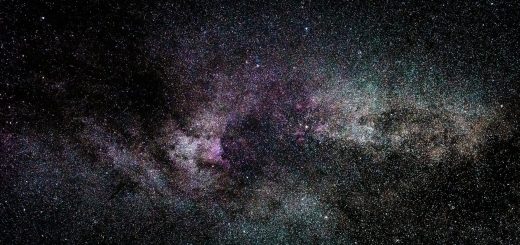The Māori Canoe: Navigating the Waters of Myth and Legend

Before diving in, please note: This post is for informational purposes only. If you’d like to know more about how we approach topics, feel free to check out our friendly Disclaimer Page.
Hey there, amazing readers! 🖐️ Just a quick note: yes, we know there are a lot of ads here. Trust us, we get it—it’s not the prettiest look, but they help us keep this blog alive and kicking. Those pesky little ads cover the costs of all the behind-the-scenes magic, from hosting and tech stuff to creating content we hope you’ll love.
We’re committed to delivering quality posts, and your support (even just sticking around despite the ads) means everything to us. So, bear with us, and thanks for helping us keep the good vibes rolling. Now, on to the fun stuff! 😉
TRANSLATE BUTTON AT THE END OF THE ARTICLE
A Quick Overview
The Māori people of New Zealand have a rich seafaring tradition that dates back centuries.
Central to this tradition is the Māori canoe, known as the waka.
These canoes played a crucial role in Māori culture, history, and mythology, serving as both practical vessels for transportation and powerful symbols of identity and connection to the land and sea.
In this article, we will explore the origins of the Māori canoe, its significance in Māori culture, the types of canoes used, construction and design techniques, navigation methods, stories and myths surrounding the waka, spiritual beliefs tied to these vessels, challenges faced by Māori navigators, efforts to preserve traditional canoe building practices, modern uses of the waka, and the impact of canoes on Māori identity and heritage.
The Origins of the Māori Canoe
The Māori people are believed to have migrated to New Zealand from Polynesia in large double-hulled canoes known as waka hourua around 800-1300 AD.
These canoes were expertly crafted using advanced navigational knowledge and skills, allowing the Māori to traverse vast distances across the Pacific Ocean.
The waka hourua were essential for the survival and settlement of the Māori in Aotearoa, as New Zealand is known in the Māori language.
Significance of the Waka in Māori Culture
The waka holds immense cultural significance for the Māori people.
It symbolizes the ancestral connection to the sea, the land, and the spiritual world.
Canoes are often intricately carved and decorated with symbols and designs that represent the tribe’s history, lineage, and beliefs.
The waka is also seen as a vessel of unity, bringing people together through shared experiences of voyaging and exploration.
Types of Māori Canoes
There are several different types of Māori canoes, each designed for specific purposes and environments.
Some of the most common types include:
Waka Taua: War canoes used for ceremonial purposes and warfare.
Waka Hourua: Double-hulled voyaging canoes for long-distance travel.
Waka Tiwai: Fishing canoes used for coastal and inland waters.
Waka Kotuitui: Canoes used for everyday transportation and trade.
Each type of canoe has unique design features and characteristics that make them suitable for their intended use.
Construction and Design of the Waka
Māori canoes are typically made from large native trees such as kauri, totara, or pohutukawa.
The construction process is highly skilled and labor-intensive, involving carving, shaping, and lashing together multiple pieces of wood to create a seaworthy vessel.
Canoes are often adorned with intricate carvings, woven flax ropes, and other decorative elements that reflect the tribe’s identity and traditions.
Role of Canoes in Māori History
Throughout Māori history, canoes played a vital role in exploration, trade, warfare, and migration.
The waka were instrumental in establishing trade networks between different tribes, facilitating communication and cooperation across the islands of New Zealand.
Canoes were also used for fishing, hunting, and gathering resources from the sea and inland waterways.
Navigation Techniques of the Māori
Māori navigators were highly skilled in reading the stars, currents, winds, and other natural signs to navigate the vast Pacific Ocean.
They used traditional techniques such as wayfinding, dead reckoning, and celestial navigation to plot their course and reach their destination.
Māori sailors also relied on oral traditions, songs, chants, and stories to pass down navigational knowledge from generation to generation.
Stories and Myths Surrounding Canoes
The Māori have numerous stories and myths that revolve around canoes and their legendary voyages.
One of the most famous tales is that of the great navigator Kupe, who is credited with discovering New Zealand in his waka.
Other stories involve epic sea journeys, encounters with sea monsters, and feats of bravery and skill that have become part of Māori oral tradition and folklore.
Spiritual Beliefs Tied to the Waka
For the Māori people, the waka is not just a physical vessel but a sacred object imbued with spiritual significance.
Canoes are often blessed and ritually consecrated before a voyage to ensure the safety and success of the journey.
The waka is seen as a link between the living and the ancestral spirits, a conduit for spiritual energy and protection while at sea.
Challenges Faced by Māori Navigators
Navigating the open ocean presented numerous challenges for Māori sailors, including unpredictable weather, rough seas, and the risk of getting lost or capsizing.
Māori navigators had to rely on their skills, knowledge, and intuition to overcome these challenges and safely reach their destination.
The dangers of seafaring were mitigated by careful planning, teamwork, and respect for the elements.
Preservation of Traditional Canoe Building
In recent years, there has been a renewed interest in preserving traditional Māori canoe building techniques and practices.
Various organizations and communities are working to revive the art of waka construction, train new generations of carvers and sailors, and promote the cultural significance of the waka.
These efforts are crucial for safeguarding Māori heritage and ensuring that the art of canoe building continues to thrive in the future.
Modern Uses of the Māori Canoe
While traditional Māori canoes are still used for ceremonial events, cultural festivals, and educational purposes, modern versions of the waka have also been adapted for recreational and competitive sailing.
Waka ama, or outrigger canoes, are popular for racing and paddling sports, providing a way for people of all ages to connect with the ocean and traditional Māori seafaring practices.
Impact of Canoes on Māori Identity and Heritage
The waka continues to play a crucial role in shaping Māori identity and preserving cultural heritage.
Canoes are a tangible link to the past, connecting present generations with their ancestors and traditional knowledge.
The waka symbolizes resilience, adaptability, and the enduring spirit of the Māori people, who have navigated the waters of myth and legend for centuries.
Conclusion
The Māori canoe, or waka, is more than just a vessel for transportation—it is a powerful symbol of cultural identity, spiritual connection, and ancestral heritage.
From their origins in ancient Polynesia to their role in Māori history and mythology, canoes have played a central role in shaping the identity of the Māori people and their relationship with the sea.
By preserving traditional canoe building techniques, passing down navigational knowledge, and adapting modern uses for the waka, the Māori continue to navigate the waters of myth and legend, honoring their past while embracing the future.

The Enlightenment Journey is a remarkable collection of writings authored by a distinguished group of experts in the fields of spirituality, new age, and esoteric knowledge.
This anthology features a diverse assembly of well-experienced authors who bring their profound insights and credible perspectives to the forefront.
Each contributor possesses a wealth of knowledge and wisdom, making them authorities in their respective domains.
Together, they offer readers a transformative journey into the realms of spiritual growth, self-discovery, and esoteric enlightenment.
The Enlightenment Journey is a testament to the collective expertise of these luminaries, providing readers with a rich tapestry of ideas and information to illuminate their spiritual path.
Our Diverse Expertise 🌟
While our primary focus is on spirituality and esotericism, we are equally passionate about exploring a wide range of other topics and niches 🌍📚. Our experienced team is dedicated to delivering high-quality, informative content across various subjects ✨.
To ensure we provide the most accurate and valuable insights, we collaborate with trusted experts in their respective domains 🧑🏫👩🏫. This allows us to offer well-rounded perspectives and knowledge to our readers.
Our blog originally focused on spirituality and metaphysics, but we’ve since expanded to cover a wide range of niches. Don’t worry—we continue to publish a lot of articles on spirituality! Frequently visit our blog to explore our diverse content and stay tuned for more insightful reads.







